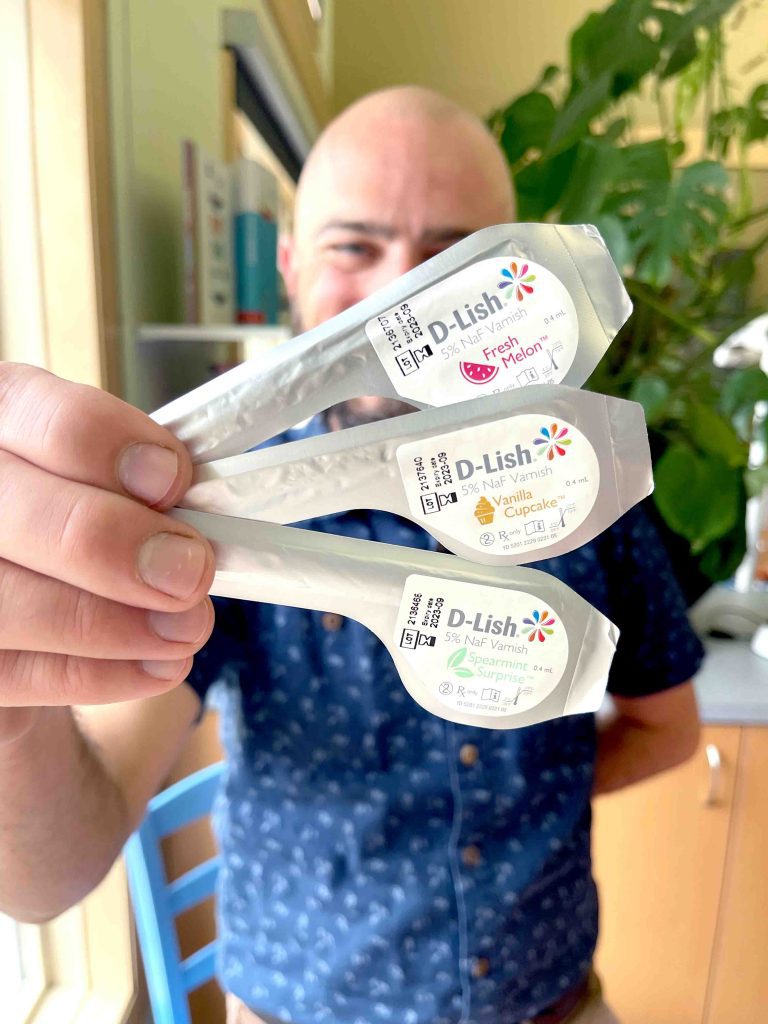Oral health is an incredibly important facet of a child’s well-being and development. The state of their mouth can have an effect on every aspect of their lives, from the foods they consume to their mental state. Dr. Sawyer with Bellingham Pediatric Dentistry sat down with WhatcomTalk to discuss how fluoride works and its impact in pediatric oral health.
“Fluoride is essentially a mineral, and it comes in an almost salt-like form that is typically added to toothpastes, mouthwashes, and community water sources in order to help reduce the risk of cavities,” says Dr. Sawyer. “At a molecular level, the fluoride ion actually replaces a hydroxyl group in the enamel, which is the hard outer layer of our teeth, and it makes that enamel more resistant to acid breakdown.” Protecting little ones’ teeth is an essential mechanism of the fluoridating process.

Like it or hate it, sugar and other simple carbohydrates are found in an overwhelming number of everyday food items. “Typical enamel starts to breakdown at a pH of 5.5 and when it’s fluoridated, that enamel can withstand acid down to 4.5 — it’s a logarithmic scale, so 1 pH difference is a massive margin,” Dr. Sawyer says. “Anytime we eat simple carbohydrates, the bacteria in our mouth can digest them and one of the byproducts of the bacteria is acid. That acid is what slowly dissolves the tooth and turns it into a cavity.” Thus, having protection against acid breakdown is an absolute necessity.
Aside from protection, fluoride can help treat already existing oral conditions. “Tooth sensitivity is another ailment having more fluoride can help decrease,” says Dr. Sawyer. “Making sure people with tooth sensitivity have optimal fluoride in their oral healthcare regimen can help decrease the sensitivity.”

Fluoride is also widely used as a strong preventative toward dental caries, the number one chronic childhood disease. “Caries is the disease of cavities and almost 50% of kids aged six to 19 have had a cavity already,” Dr. Sawyer says. “When kids have cavities, they cause pain, infection, and other major disruptions in their life, such as missing school and eating issues. Fluoride has a larger ripple effect from something that just strengthens the tooth to something that can prevent many other downfalls down the road for the young child.”
Proper use of fluoride as a preventative measure will not only save kids’ teeth, but their parents’ wallets in the long run. “Looking at it from a financial standpoint, the cost of water fluoridation or fluoridated toothpaste versus how much money it saves from all those cascading things down the road is incredible,” says Dr. Sawyer. “The return on investment, so to speak, is very high and very easy.”

Fluoride is highly accessible, but Dr. Sawyer stresses that every patient is different and therefore the correct amount of this useful mineral should be prescribed on a case-by-case basis.
“It is really noteworthy that we essentially have to prescribe how much fluoride a person needs because not every person is the same,” Dr. Sawyer says. “Bellingham does not have fluoride in the water, which means most kids in my community require fluoride supplements. You don’t want to start those too early or too late.” Typically, Dr. Sawyer plans for starting at about the age of six months and older, and then increases dosage in small amounts as they age.
Factors dentists consider include a child’s diet, how they brush their teeth, the quality of their brushing habits, and their parental history. “There’s something called vertical transmission of caries,” says Dr. Sawyer. “If the parents have active cavities in their mouth, there’s a potential chance to inoculate their children with a bad bacteria that causes cavities.”

Fluoride is administered to patients via two main methods. “Systemic fluoride is in the water or the supplements we give, and this method is especially effective between the ages of six months to about 14 years on permanent teeth that are still forming in the jaws of the child,” Dr. Sawyer says. “That fluoride is being ingested, picked up in the bloodstream, and deposited in teeth buds. Mouth rinses, toothpastes, and fluoride varnish are topical and help the teeth that have already erupted from the gums. Over time it’s good to re-fluoridate those teeth with multiple applications so they stay fluoridated with a higher resistance to cavities.”
How can parents start protecting their children’s teeth on a day-to-day basis? Dr. Sawyer recommends using fluoridated toothpaste at all ages, starting when the patient gets their first baby teeth.

“When they’re between six months and three years old, I want them to use the volume of a grain of rice,” he says. “Anyone older than three needs a pea-sized amount. A dollop of toothpaste is called a nurdle. You need to use the appropriately sized nurdle for your age.”
Every child’s plan of care is as unique as their wildly different lifestyles and personalities. At Bellingham Pediatric Dentistry, families learn the best way to protect and nurture each child’s teeth to ensure strong dental health for years to come. Parents are encouraged to visit a pediatric dentist by their child’s first tooth or first birthday, whichever comes first.
Sponsored










































